Metrics to Select and Measure Twitch Creators for Game Marketing - Part 1
Find all of the information you need to plan and measure a data-driven Twitch campaign accurately. In this series, will be able to identify which metrics matter, and be confident that you are getting the most out of your marketing spend.
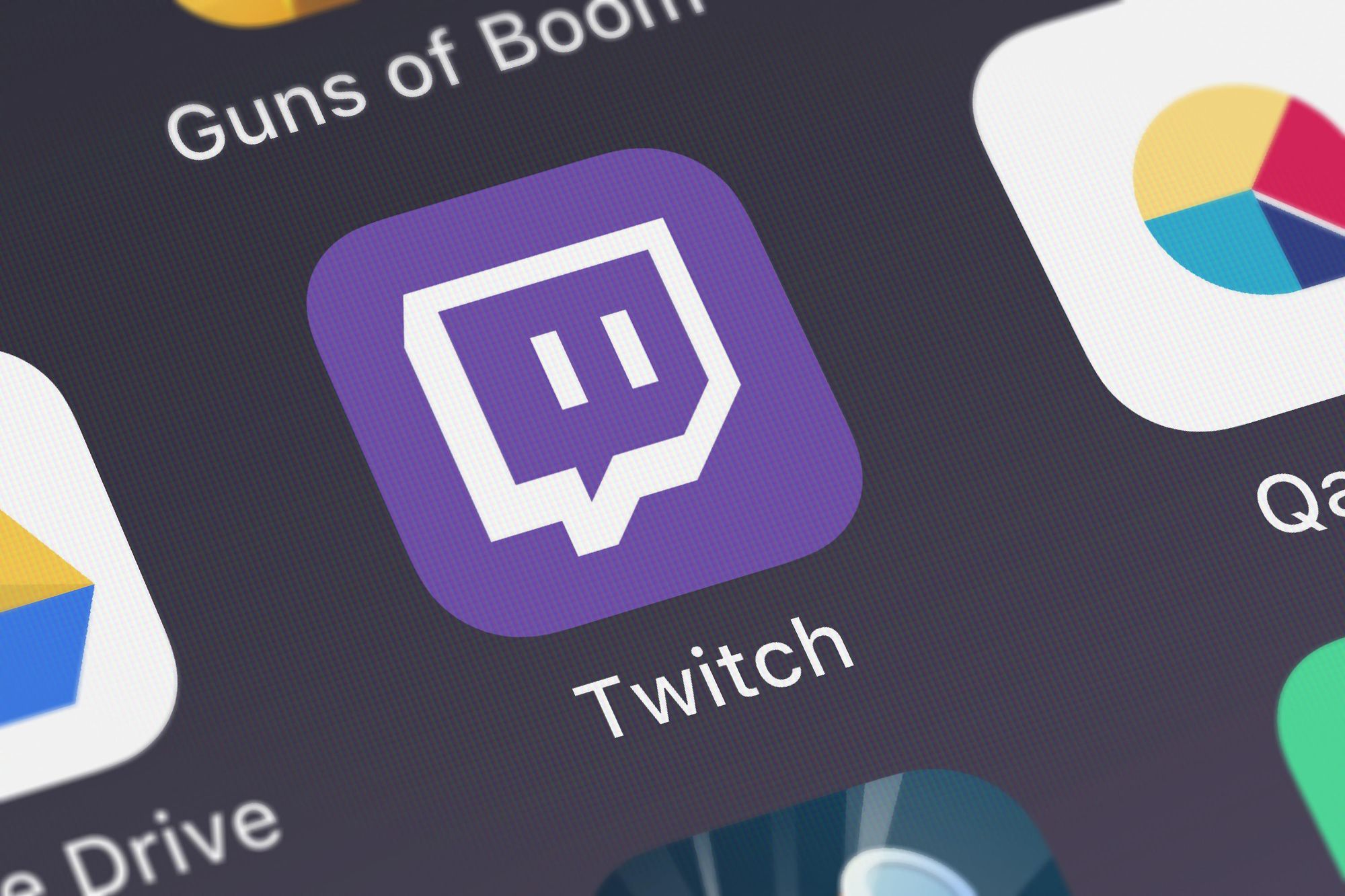
After reading this series, you will have all of the information you need to plan and measure a data-driven Twitch campaign accurately. You will be able to identify which metrics matter, and be confident that you are getting the most out of your marketing spend. Let’s get started!
Since 2016, Gamesight has developed and used both proprietary and industry-standardized metrics to find and measure influencers for sponsored video game campaigns on Twitch. We are going to examine some of these metrics and weigh each of their benefits and potential shortcomings, starting with the following:
- Channel followers
- Channel views
- Archived broadcast views
- Peak concurrent viewers
In a follow-up article, we discuss concepts like audience health, loyalty, and freshness in addition to game similarity and channel growth. We also go beyond the basic viewership measures shown here and dive into more complex engagement metrics that we commonly use when working with influencers, including:
- Average Concurrent Viewership (ACV)
- Viewer-hours
We will also go through a case study on how viewership and engagement metrics behave differently when a channel’s long-term stream viewership changes significantly as a result of a Twitch raid.
Channel Followers
The Channel follower count is the first number people gravitate towards when discussing the size of a channel on Twitch. It is displayed prominently and tends to be a large number, making it an easy first step towards measurement. In some ways, soliciting users to press the follow button is the first influencing act a streamer does.
What exactly is a follower? Simply put, following is a free way to “bookmark” your favorite channels. When you follow a channel, you also have an option to receive notifications when the channel goes live. Note that following is different from “subscribing” on Twitch; the latter is a paid feature giving the subscriber access to custom emojis, restricted chat, and other perks.
You may commonly see marketers treating the follower count as the addressable audience for a creator. But as we’ll show below, that is rarely, if ever, the case.
Benefits
The primary benefit of using follower count comes from the ease of which it is measured. You can see follower counts directly on a channel's profile.

Twitch itself uses follower counts as a metric for their affiliate monetization programs - requiring a channel must have at least 50 followers to join.
Drawbacks
The single biggest issue with follower count is that it tells you nothing about how many live viewers a channel gets. Viewers tend to follow many channels over time and continue following even if they don’t actively watch the channel anymore. This means the follower count is closer to being the number of people who have ever been interested in a channel, instead of its current active audience size.
As a result, the number of people watching a channel’s streams is almost always significantly lower than their follower count. In fact, among the top 5,000 streamers from February to May, 95.1% of all streams had less than a tenth as many views than their follower count. Additionally, the ratio between active viewers and followers varies widely by channel. For instance - LIRIK, one of Twitch’s largest creators with ~2.6 million followers, saw his peak viewership ranging between 0.05% to 1.78% of his following. This is in contrast to TheGregfg, who also has ~2.6 million followers and saw their peak viewership range from between 0.39% to 20.28% of their follower count.
The below visualization demonstrates this by comparing a channel’s follower count (gray bar) to live stream viewership (blue dots) from April to May 2020 for select top channels. Despite having a larger following, channels like Myth have lower peak viewership than others like Anomaly with half the follower count.
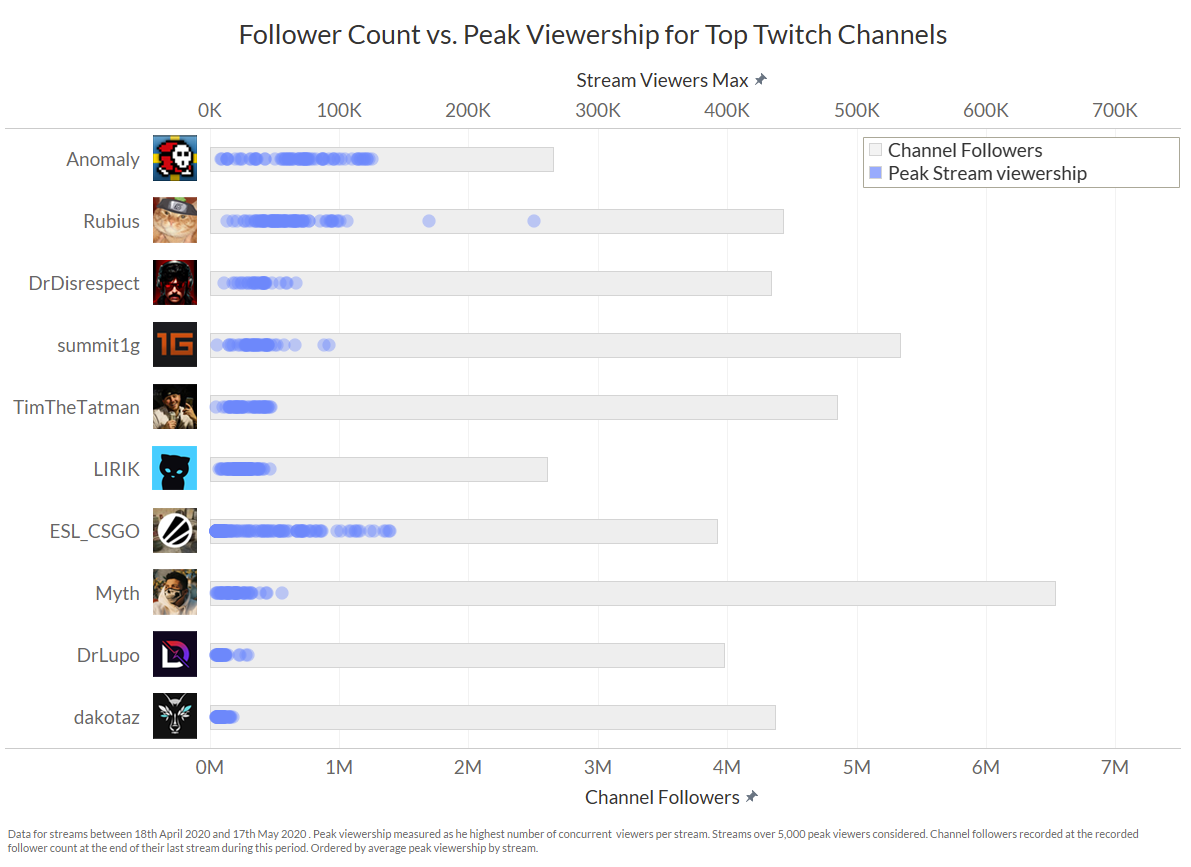
Channel Views
The channel views counter shows the number of page views the channel has received. While it isn’t officially defined by Twitch, insights from Twitch staff and our own data show that it is a simple count of the number of total unique visits to a channel’s home page.
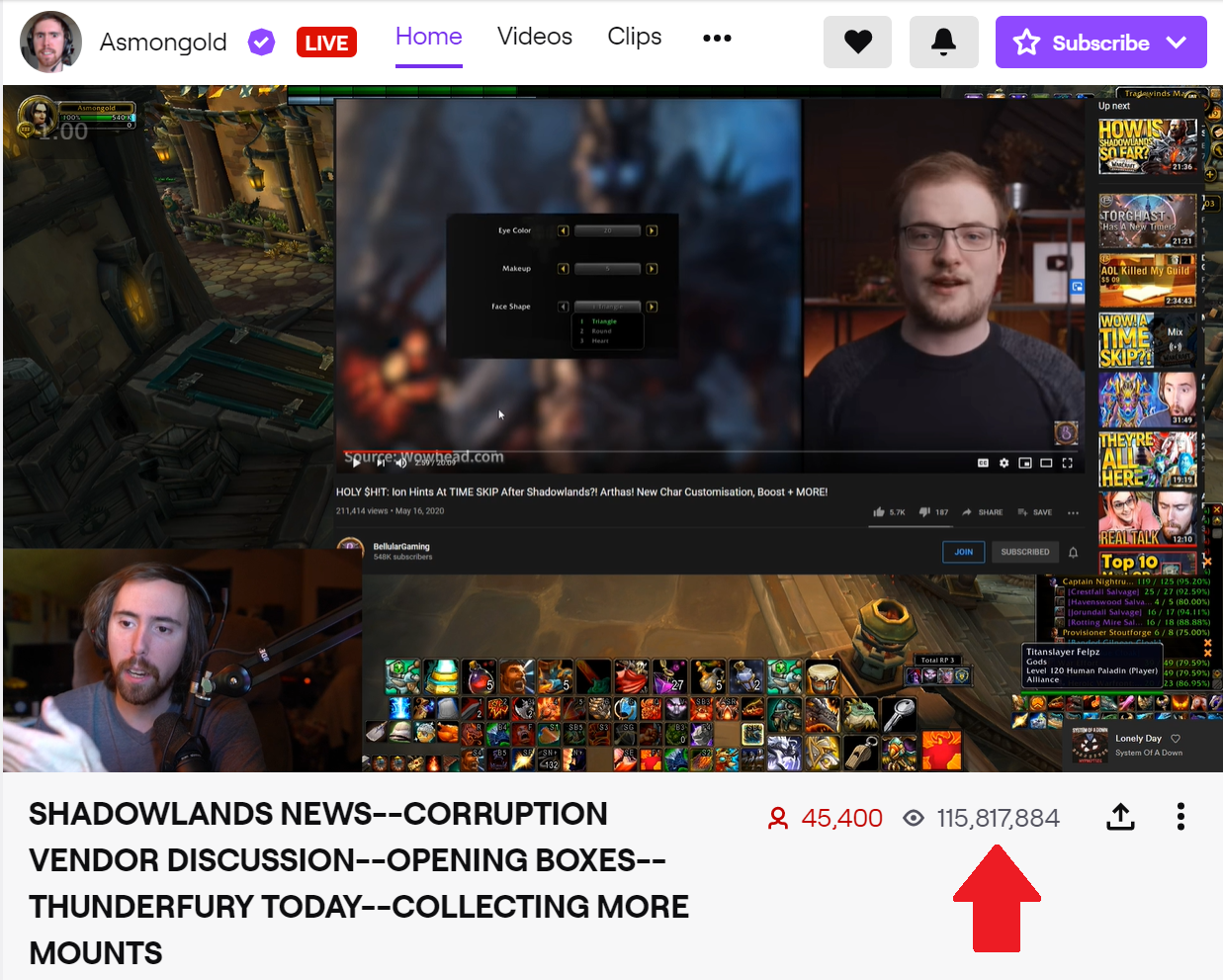
Benefits
Channel view is a reliable way of gauging how often people have loaded a creator's page. Like follower count, it is easily accessible on the channel's page.
One of the most valuable uses for channel view count is the ability to identify channels utilizing view-bots. Many view-botting techniques don't load the creator's page directly, so you can often identify a stream with fake viewers by comparing their channel view count to other profiles of similar size and age.
Drawbacks
The view counter is straightforward. It is incremented every time the channel page is loaded, whether or not the channel is currently streaming. It also does not include views from stream embeds on other websites.
As we will discuss below, channel views are only indicative of historical exposure - not audience interest, engagement, or current live viewership. As such, we do not recommend using channel views as a metric in most cases.
Archived Broadcast Views
Past streams, videos, and clips can be uploaded as video on demand (VOD) content to a Twitch channel. Archived stream VODs can provide insights about a stream, including when the broadcast happened, how long it was, and how many times the archived video has been watched.
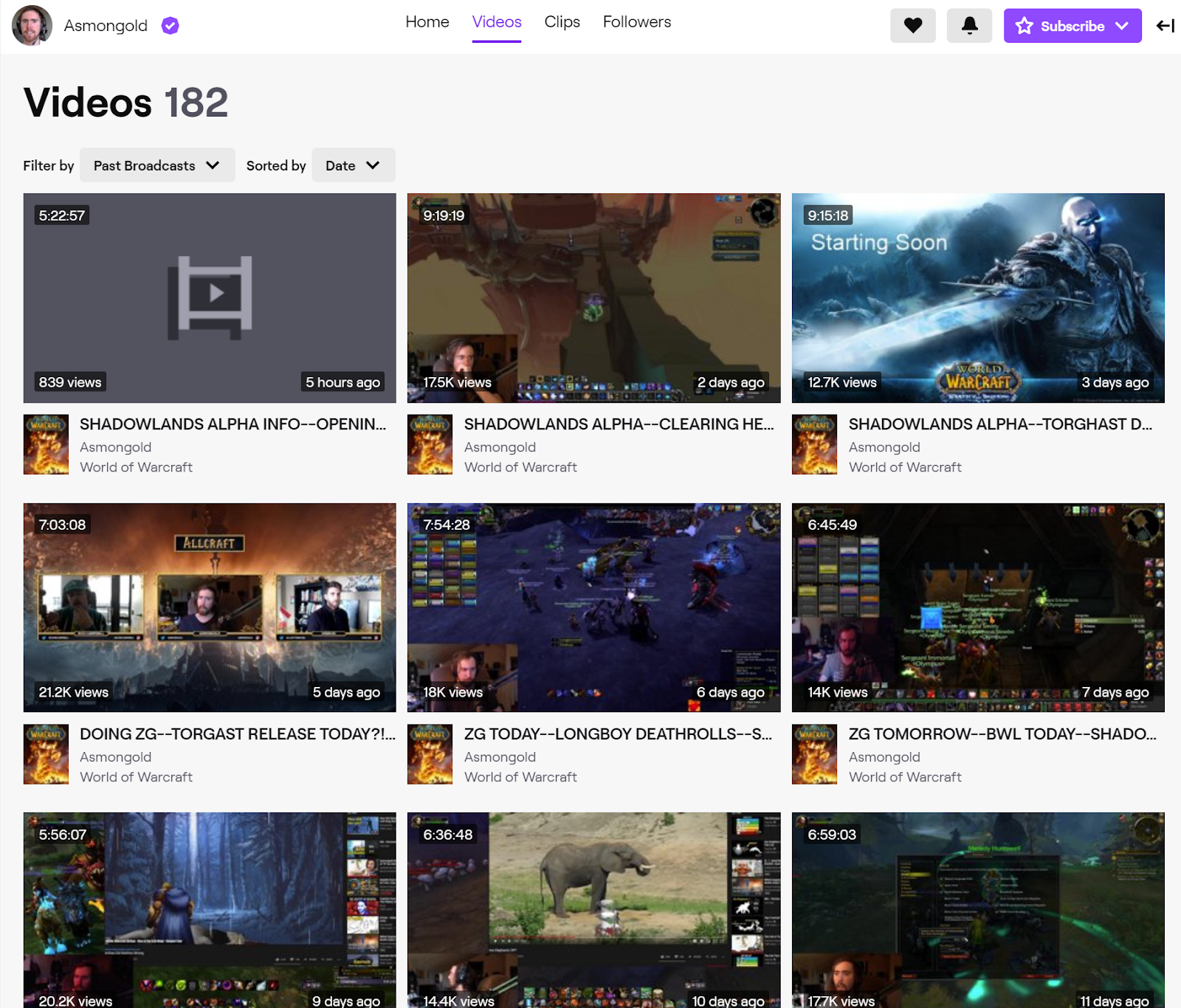
Benefits
Video viewership can provide directional data on how different games and content types have performed on the channel. For example, you can look for past streams in the same genre as your game to see if there is a significant viewership dropoff. This can be a good indicator of whether a channel’s audience would be interested in watching a stream of your game. It is common to see channels that are dedicated to a specific game or genre get significantly lower viewership when they play new games. Archives can also be useful to gauge the style of content that a creator makes and whether they would be a good fit for your game.
Drawbacks
VOD viewership on Twitch is much smaller and has less engagement than live content. This makes it difficult to use the metrics from VOD viewership to make any assessments about live viewership or the reach of a channel.
Additionally, Twitch only archives streams for a limited amount of time: 60 days for the 0.15% of partnered channels, and 14 days for everyone else. Archival is optional and is turned off by default. Because of this, finding and assessing streamers from only their channel’s archived videos is inconsistent at best.
Comparison to live viewership
Since Twitch counts viewership for archived streams separately from its live counterpart, there can be high variance between the two. Within the top 5,000 streamers, average video viewership is 1,948, whereas the average peak live viewership is 2.4 times that at 4,665. Put otherwise, for every 100 live views, an archived stream typically sees 42 VoD views. In fact, only 13% of these streamers had higher viewership on their archived content than their peak live viewership.
Within the below chart, note how live viewership is often several times larger than VOD viewership, which is to be expected considering the “live” nature of Twitch.
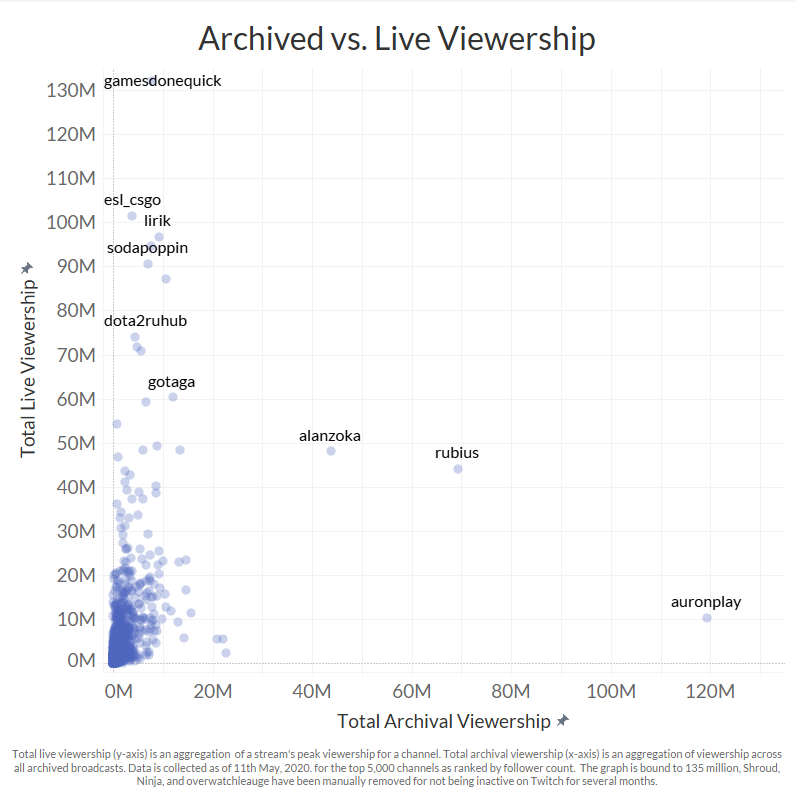
Despite archival viewership being smaller than live viewership, it is possible that viewers watching VoDs are people that missed the live stream. This means even after a live stream is over, content may be reaching up to 42% more people.
Peak Concurrent Viewers
Peak concurrent viewers is the first metric that we will look at that directly measures live stream viewership. It is simply the highest number of simultaneous viewers a channel had over the course of a single stream.
Benefits
We discussed how the amount of live content consumption on Twitch has more than doubled since the start of March 2020, due to the COVID-19 pandemic. Measuring live viewership for a channel is critical in understanding how many viewers a streamer actually reaches, or gauging the audience for an event or stream. While people often use follower counts or channel views to approximate, the only way to measure how many people viewed a stream is to actually measure stream viewership.
Drawbacks
The first hurdle for any measurement of live streams is that they are ephemeral - Twitch doesn’t maintain public records of past streams or their viewership. The only way to get data about a stream is to either watch in real-time or use a third-party platform to record the stream’s stats.
Furthermore, people who stopped or started watching the stream beyond the peak viewership are not counted, making this an underrepresentation of actual reach. For instance, if half of a stream’s audience left and was replaced with new viewers, the peak viewership does not change this growth in audience a stream is reaching.
Closing Thoughts
The four metrics we’ve discussed - follower counts, channel views, VOD views, and peak concurrent views - are all relatively easy to measure, but can have drawbacks such as being unrepresentative of a streamer’s actual impact or reach. As such, Gamesight does not recommend using any one of these metrics on its own to assess a streamer. To address the problems associated with these simple measures, Gamesight uses engagement metrics which are discussed in Part 2 of this series.
If you would like to speak with us about this article, or are a developer or publisher and want to work with us for your advertising needs, please reach our team at support@gamesight.io.

